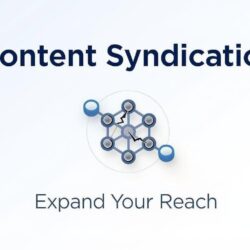In 2025, B2B organizations are increasingly relying on data-driven strategies to maximize revenue. At the core of this approach are Customer Data Platforms (CDPs), which consolidate, unify, and activate customer information from multiple sources. By providing a complete view of every account and decision-maker, CDPs enable businesses to identify high-value opportunities, deliver personalized campaigns, and optimize the buyer journey. Leveraging these platforms allows companies to turn insights into measurable outcomes, ensuring consistent revenue growth in a competitive B2B landscape.
Building a Unified Customer Data Foundation
Revenue maximization begins with accurate, centralized data. Customer Data Platforms aggregate information from CRM systems, marketing automation platforms, website interactions, and social media engagement to create a single source of truth. This unified foundation ensures that all teams have access to the same insights, reducing inefficiencies and eliminating fragmented decision-making. In B2B environments where multiple stakeholders influence purchasing decisions, CDPs provide clarity and context, enabling marketers and sales teams to target accounts with precision and optimize revenue potential.
Enhancing Account-Based Marketing for Revenue Growth
Account-Based Marketing (ABM) is a highly effective strategy for driving B2B revenue, and Customer Data Platforms enhance its success. CDPs allow marketers to identify high-value accounts, understand key decision-makers, and track engagement across channels. By using predictive analytics and behavioral insights, teams can prioritize outreach and tailor messaging for each account. This targeted approach ensures resources are focused on opportunities with the greatest revenue potential, accelerating the sales cycle and improving conversion rates.
Driving Personalization to Increase Conversions
Personalized engagement is critical for revenue growth in 2025. Customer Data Platforms enable marketers to segment audiences based on behavior, industry, and engagement history, ensuring that every interaction is relevant. Personalized emails, content recommendations, and account-specific offers increase the likelihood of conversion while building trust with key stakeholders. By delivering value at every touchpoint, CDPs help B2B organizations turn prospects into paying customers and maximize revenue per account.
Predictive Analytics for Revenue Forecasting
Predictive analytics integrated within Customer Data Platforms allow B2B companies to anticipate future revenue opportunities. By analyzing historical data, engagement trends, and behavioral patterns, CDPs provide insights into which accounts are most likely to convert and which existing clients may be ready for upselling. These predictions enable teams to allocate resources efficiently, plan campaigns strategically, and make proactive decisions that drive measurable revenue growth.
Optimizing the Sales Funnel
A key advantage of Customer Data Platforms is the ability to optimize the entire sales funnel. CDPs provide visibility into every stage of the buyer journey, highlighting where prospects drop off and which touchpoints deliver the highest ROI. Marketing and sales teams can use this data to refine campaigns, personalize messaging, and improve lead nurturing processes. The result is a more efficient funnel that converts leads faster, reduces customer acquisition costs, and ultimately maximizes revenue generation.
Aligning Marketing and Sales for Revenue Impact
Revenue growth depends on close collaboration between marketing and sales teams. Customer Data Platforms facilitate this alignment by providing shared insights into account activity, engagement history, and lead quality. Marketing can deliver qualified leads with context, while sales can follow up with timely, personalized communication. This coordinated approach ensures that high-potential accounts are prioritized and nurtured effectively, increasing conversion rates and maximizing overall revenue impact.
Enhancing Customer Retention and Lifetime Value
Maximizing revenue is not only about acquisition but also retention. Customer Data Platforms allow businesses to track customer behavior, identify disengagement signals, and develop targeted retention campaigns. By providing personalized offers, educational content, and timely support, CDPs help maintain engagement and strengthen long-term relationships. Higher retention rates contribute to increased customer lifetime value, recurring revenue, and sustainable growth for B2B organizations.
Real-Time Analytics for Agile Decision-Making
The ability to make data-driven decisions in real time is essential for maximizing revenue. Customer Data Platforms provide dashboards and reporting tools that allow marketers and sales teams to monitor performance, track engagement, and measure ROI instantly. By analyzing real-time data, teams can adjust campaigns, reallocate resources, and optimize strategies to capitalize on emerging opportunities. This agility ensures that every effort contributes directly to revenue growth and overall business success.
The Future Role of CDPs in Driving B2B Revenue
As technology continues to evolve, Customer Data Platforms will play an increasingly strategic role in B2B revenue growth. Their ability to unify data, provide predictive insights, enable personalized engagement, and align marketing with sales makes CDPs indispensable for companies aiming to outperform the competition. In 2025, organizations leveraging these platforms will be positioned to optimize every interaction, maximize revenue potential, and build a data-driven culture that drives sustainable growth.
About Us
Acceligize is a global B2B demand-generation and technology marketing firm specializing in performance-driven lead generation solutions. Their services include content syndication, account-based marketing, intent and install-based targeting, and custom campaign strategies. Leveraging data science, technology, and human intelligence, Acceligize helps clients reach high-quality audiences and drive conversions across the full marketing funnel.




